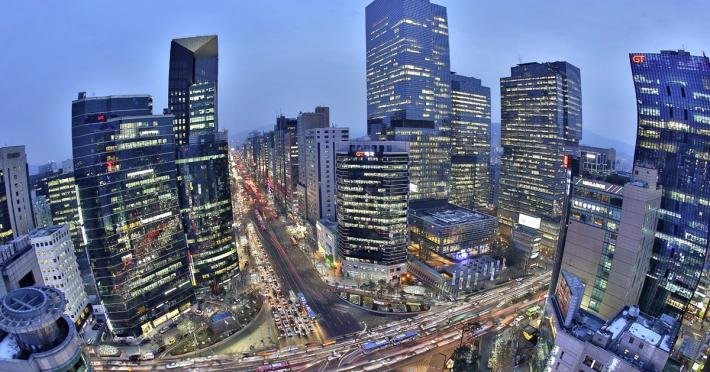Excerpts:
The Korean success is due to several factors: a high degree of intervention from the State (which has steered the process with an iron hand), substantial U.S. technical and financial support (in the form of grants), a radical land reform carried out from the start, a 25-year period during which the industrialisation model based on import substitution was gradually converted into export substitution (the latter being impossible without the former), state control of the banking sector, the enforcement of authoritarian planning, strict control of currency exchange and capital flows, state-enforced prices for a wide range of products, and not least, the protection afforded by the U.S., allowing Korea to implement policies that it condemned elsewhere. The Korean government has also made great progress in education, thus ensuring a ready supply of highly skilled manpower to private enterprise.
Paradoxically the scarcity of natural resources has been an asset in the country’s development in that it has not attracted the greed of transnational corporations or the US. The U.S. saw Korea as a military strategic zone to counter the communist bloc, not as a strategic source of supplies (as is the case for Venezuela, Mexico or countries in the Persian Gulf). Had Korea been endowed with large oil fields or other raw materials, the country would have been treated as a supply zone and would not have been allowed the same margin of flexibility to develop its powerful industrial network. The U.S. is not prepared to deliberately promote the emergence of powerful competitors possessing large natural reserves as well as diversified industrial activities.
South Korea benefited from massive US external aid. Only very few other countries have received the same kind of preferential treatment: Taiwan and Israel are two of them.
General Park Chung Hee implemented an accelerated industrialisation policy underpinned by the strictest planning. The first five-year plan was launched in 1962. Korea took a firm protectionist stand with regard to its agricultural production (a ban on rice imports) and industrial output. […] The State favoured the development of chaebols, vast conglomerates bringing together a number of private companies [Samsung, Hyundai, Lucky Goldstar, Daewoo, Kia, etc.] […] The State planned the country’s economic development with an iron hand. In a sense, it was the State that created the Korean capitalist class.
Throughout Park’s dictatorship, in spite of repressive measures, large protest movements developed at regular intervals, often ignited by students. […] [In response to the Gwangju uprising,] several hundred students and inhabitants were killed. Repression was carried out with the blessing of Washington and of the U.S. army. In the following months repression struck all over the country. According to an official report dated 9 February 1981 over 57,000 people were arrested during the ’Social Purification Campaign’ that had been launched in the summer 1980. Some 39,000 of them were sent to military camps for ‘physical and psychological reeducation’. In February 1981 dictator Chun Doo Hwan was received at the White House by the new U.S. president Ronald Reagan.
The dictatorship prevented the working class from developing independent trade unions and used harsh repressive measures. One of the components in the Korean miracle was the exploitation of workers.


